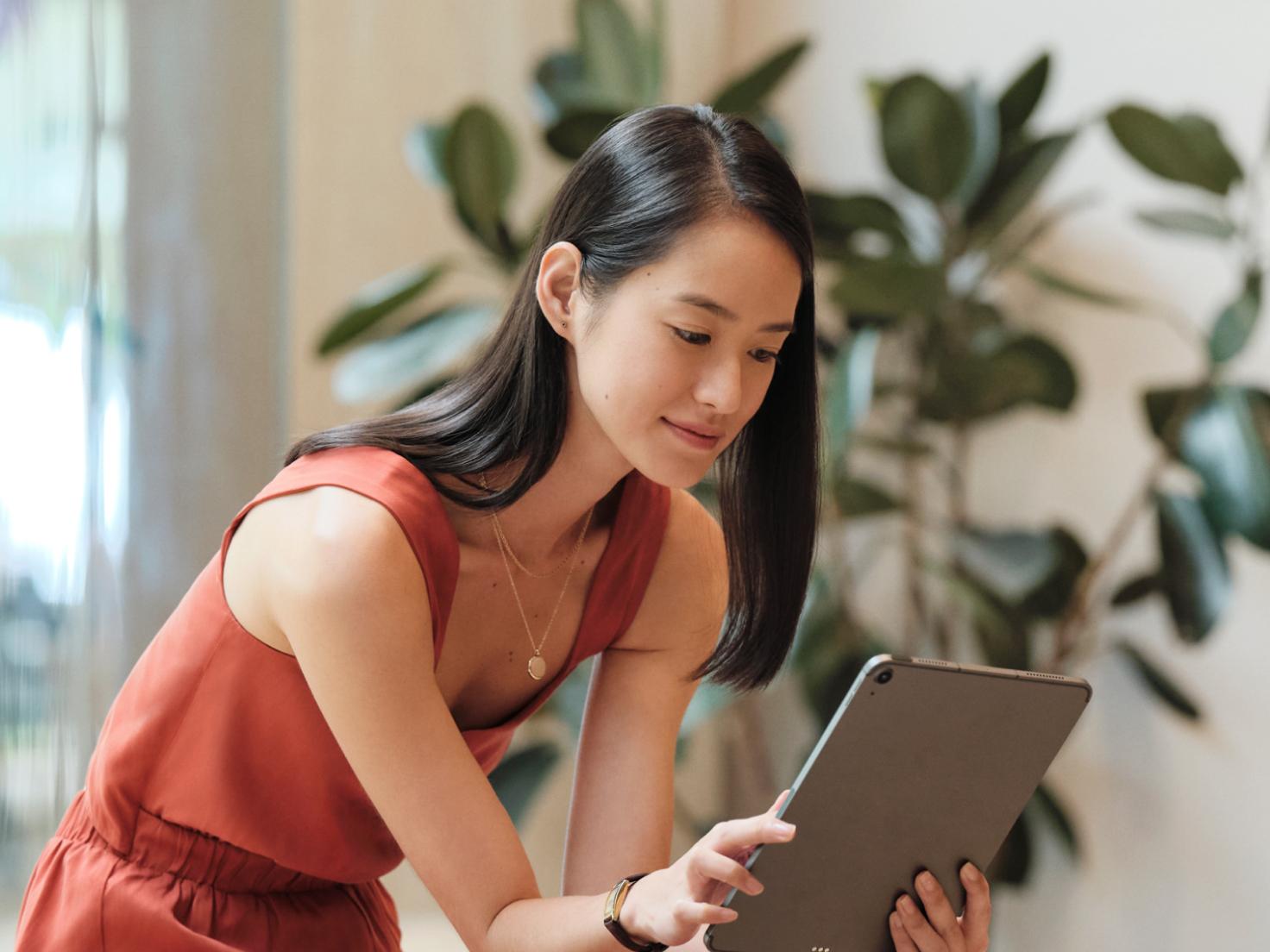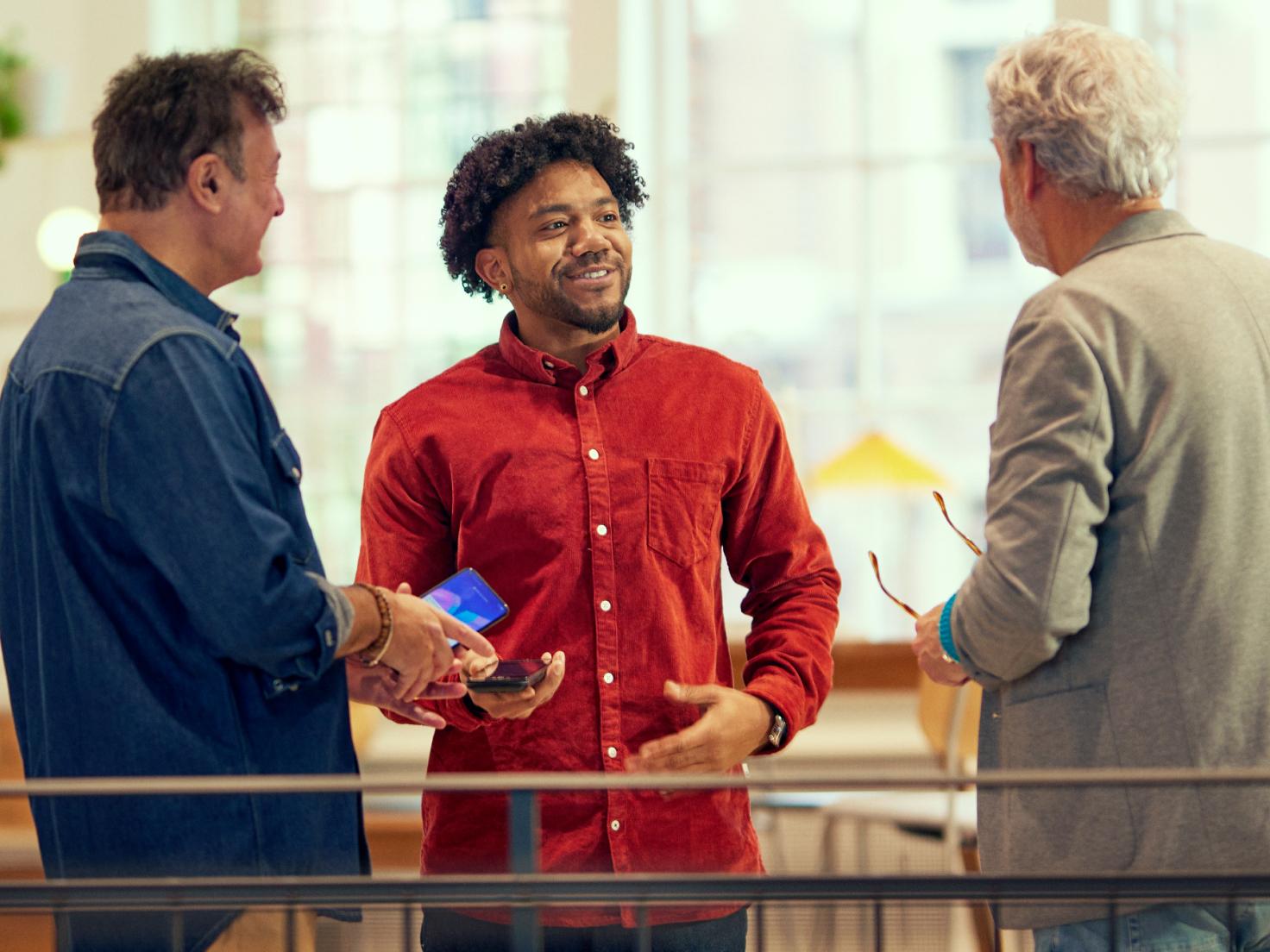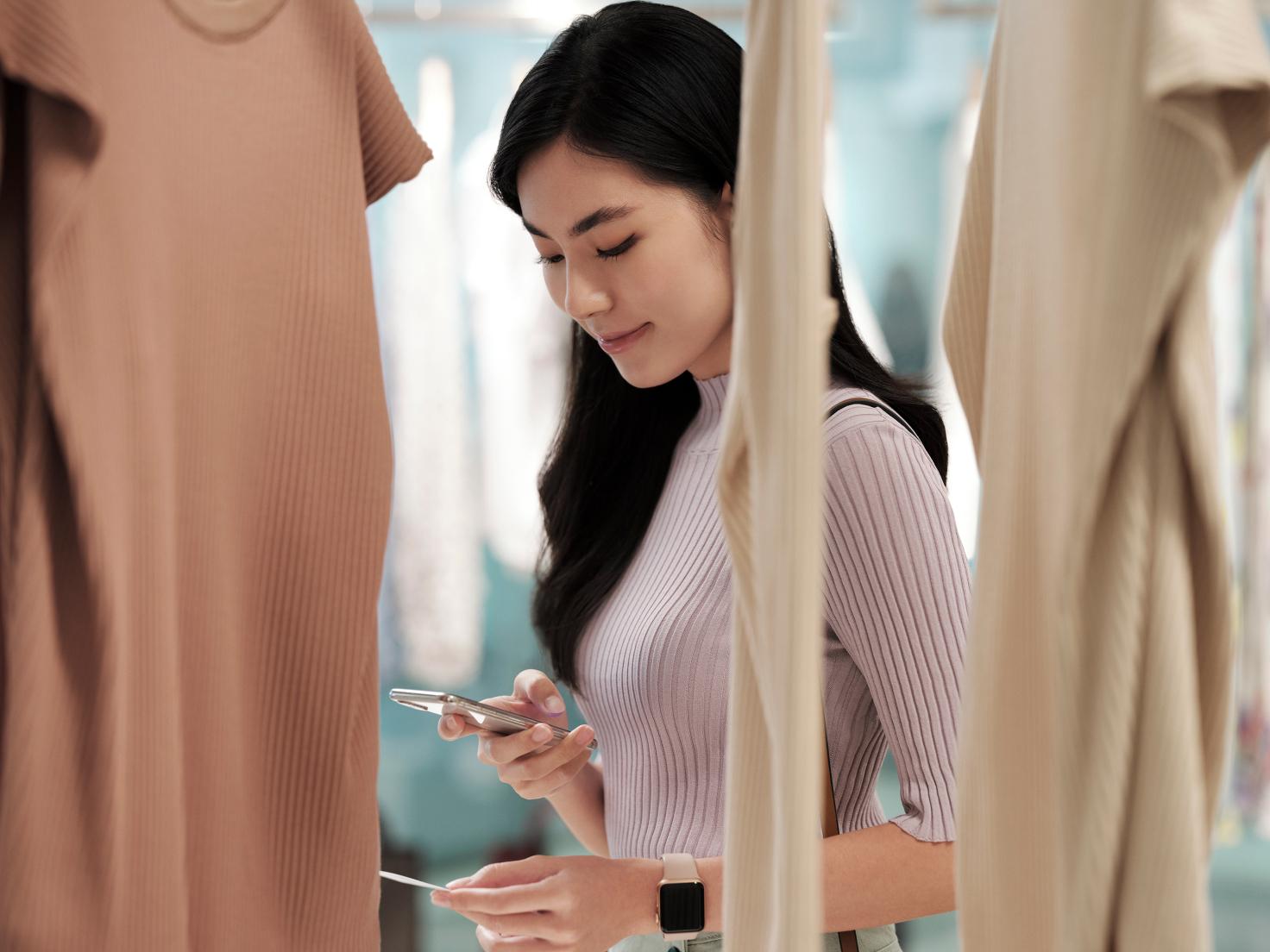Episode 3
Exceeding customer expectations
As customer expectation in the Asia Pacific region evolves, one thing remains constant – the demand for high service levels and convenience. The data shows this: 73% of APAC consumers will not shop with businesses that provide a bad customer experience. How can brands keep up with evolving consumer expectations and craft seamless experiences?
To find out more about the trends shaping the retail, restaurant, and hospitality sectors in APAC, check out our Retail Reports here.
Featuring

Cat Parker
Global Director Commercial, T2 Tea

Josh Bell
Principal, Guzman y Gomez Singapore

Lawrence Palletier
Sales and Marketing Director, Redcat

Lionel Tan
Former Product Lead, Adyen
Explore all our episodes
Episode transcript
Charmaine: Customer expectations come in many shapes and sizes, while one buyer may prioritise fast delivery, another will place a great emphasis on using their preferred payment method. Yet there is no doubt that customer expectations in Asia Pacific are evolving all the time, no matter the industry and shopping method, in store, online, or on an app, the modern customer expects a personalised shopping experience and seamless way to shop and pay. When it comes to high levels of service and convenience, consumers in Asia Pacific are some of the most demanding. Adyen's latest Retail Report revealed that 73% of APAC consumers will not shop with organisations that give them a bad shopping experience, either online or in store, compared to a global average of 70%. Brands wanting to create positive customer experiences in Asia Pacific needs to have innovative and responsive solutions.
Cat: Customers have really moved rapidly. As a retailer, our job is to keep up with the customer expectations and they're running a million miles an hour, so we've just got to keep up.
Charmaine: Welcome to Behind the figures, the podcast that goes beyond the data to explore the trends shaping Asia Pacific's retail, restaurant, and hospitality sectors and how to leverage the latest technology to make the most of it. I'm your host, Charmaine Yee. In this episode, we're tackling the topic of customer experience. As we just heard, consumer demands are changing. There have been two main drivers of these trends. One, digitalisation has changed just about every facet of our lives, with the impact perhaps most strongly felt in consumer-facing businesses. Secondly, the COVID-19 pandemic created a fundamental shift in how people work, live, and shop. Here to explain these changes in more detail is Lionel Tan, Adyen's Product Lead for APAC.
Lionel: There is no doubt that the pandemic has accelerated the digital adoption amongst consumers, as more and more of them were more or less forced to join this digital economy, when faced with lockdowns, movement restriction orders, that just limited that in-person or face to face commerce in the last two years. My mom, for example, it's like she made her first online purchase during the pandemic. And it was very shocking to me: the last 60 years of her life, she has never bought anything online. And all of a sudden because of this, that it's like, no way to go to the shops or no way to go to the boutiques, that she decided to buy something online. So we see a lot of small and medium businesses also having to adapt to provide online services or online touchpoints in order to continue to service their customers and provide additional service like order online, pick up in store, and door to door delivery as well. Now payments also had a spillover effect, because now there's a new interaction that is becoming more and more popular for many small businesses. And we see that there's going to be also a decrease in cash as a shift towards more contactless payments, QR code based payments, and also increase in cross-channel shopper experiences. So you can order in app, pick up in store, or you can get it delivered to your home, and then you can return it at a kiosk or in store as well.
Charmaine: These trends are supported by the findings from Adyen's Retail Report with 53% of APAC merchants seeing that customer expectations have increased as a result of the pandemic, while 60% find that customers now expect faster service or delivery. Perhaps the industry where these changes were most keenly felt is the food and beverage sector. New technologies, such as QR codes and contactless ordering that were adopted during the pandemic, are now seen as a normal part of the restaurant experience. However, while the technology is here to stay, businesses in the food and beverage industry need to ensure that the restaurant experience can cater to customers of all age groups and preferences, says Lawrence Pelletier, Sales and Marketing Director at hospitality IT platform, Redcat.
Lawrence: So there's been some interesting trends and changes over as COVID has come and impacted people's lives. So in the early days of COVID, one of the key things was well, how do I order food and online ordering and order to pick up and those sorts of things became really prevalent. And then as people were allowed back into the restaurants and shops to eat, they'd start to use QR codes quite often to have a menu-less experience. And generally the idea was, well, if I don't give you a menu, that's lessening the chance of you getting sick or getting in contact with germs. So this whole contactless ordering thing became really important. So as time has now moved on, what has started to happen is you'll start to see, again, different in different countries, but the general trend is that, depending on your age, group, and background, you want to use technology differently. So what you often see now is older people are saying, you know, what, I generally like to talk to people again, and I'd like to have a real hospitality interaction and have somebody explain what the food is and what the specials are today and what I might want, and what the difference is between a couple of different dishes, where you find the younger generation, and younger in this case is may be less than 25 or so depending again, on where you are, a lot of those people, they really don't want to interact with humans, because that's part of their world, you know, the way they've grown up. They're actually very keen to continue on with the concept of having contactless ordering, right, QR code ordering, or similar. What's interesting about where technology is going is it's kind of having to almost shift or break into and have different ways of catering to those different demands. And I think that's probably one of our big changes is now this adaptation to how that tech can work for everybody, not just squeezing everybody into one direction: you must order like this. Now it's saying okay, well, there's lots of different ways we should interact. And what we're starting to see now, for example, is a lot more kiosks happening, that kiosk could be partly because of contactless or it's less contact, even though you're touching a screen, it's seen as somehow safer or more distant, right. But the other part of the kiosk, where that comes into this equation, and still is also true with this QR code ordering is one of the big issues in our in society right now, again, across multiple countries, is the lack of hospitality employees. So we see problems, we're doing things like closing on Mondays, because I don't have the staff to open on Mondays. So some technology, whether it's QR code ordering, whether it's kiosks, whether it's online ordering, those sorts of technologies are actually enabling people to open because they can operate with fewer staff.
Charmaine: One size doesn't fit all, when it comes to keeping your customers happy. To successfully navigate the new consumer landscape, APAC companies need to be able to respond to the needs of different customer groups.
Lawrence: The brands that excel are the ones that are being adaptable, are the ones that are actually really being flexible. I've seen it happen in a couple of different ways. I've seen some brands have actually gone full on back into a human service concept, where they've gone straight back to the old way, but go back to having human interaction: somebody comes in serves you and they take your order. And then you start to see a lot of ones, the ones that are doing well, they're mixing it really well. Sometimes it's about being fit for purpose, even. It's things like they'll you might have, for example, in a venue, you might have a main venue, which is really busy and is all human contact, and everybody does the ordering. But maybe for example out the back, you might have an outdoor seating area. And as you get sort of further from the venue, people are starting to order from QR codes or remote ordering if some way, right. The guys that I've seen do it well are the ones that get the right mix where they're actually catering to that consumer appropriately almost. And it could be based on venue or based on age or based on lots of different things, right. But it's actually just finding out with your customer base, what what kind of works best for them.
Charmaine: Understanding the customer will help brands make decisions about curating the most effective mix of technology and services that will keep customers coming back. But with customer behaviour evolving so fast, how can brands stay up to date with changing expectations? Lawrence is here to share some of the restaurant trends he's seeing across APAC.
Lawrence: We're seeing quite a few general shifts, right. And I always say it depends what country you're in. And we're seeing in general, a trend towards for example, drive thru. In Australia, we see a big trend towards drive thru. Of course, that's different in different countries, where fewer people have vehicles and things right. You're probably not going to see a lot of drive throughs in Hong Kong, it doesn't happen. We're seeing a lot of kiosks. And that's pretty global, that kiosk-based ordering is really picking up. And that's, I think, based on the fact that you've got a visual menu, maybe less pressure for the people behind you in the queue, you know, you can take your time to order things, generally getting a higher average order value. And we believe that's probably around also, there's a little bit less guilt, you know. You don't worry too much about ordering a dessert because there's no human there to criticise you or, you know, you might think they're going to criticise you. I'm sort of seeing those sorts of trends. And I think you'd probably tie that in with maybe a lessening of the focus on online ordering in order to pick up, because those were really big at the height of the pandemic. And I think now they're kind of normalising. They're kind of coming into: yep, I'd still like to use those but maybe a bit more about where it's appropriate instead of being forced to use them, now I can choose to use those. The vendors, they're actually starting to apply, or try to apply, those technologies to the right places, rather than to all places. So I think the future, if you'd like, is probably around having customers being able to meeting their needs across multiple touchpoints, but in a way that's comfortable for everybody, and not forced.
Charmaine: One thing that's clear is the staying power of the in-person experience. The pandemic may have increased the importance of having an online store and digital payment options, but as restrictions were removed, customers have returned to physical stores. In fact, 61% of APAC customers say they prefer to shop in a physical store, while 67% agree that physical stores are an important touchpoint, even if they shop with the same retailer online. While this may seem counterintuitive, the significance of the in-store experience is no surprise to Josh Bell, Principal at Guzman y Gomez.
Josh: We're fascinated with this space because we believe you can't really build a brand or restaurant brand exclusively digitally. The in-store experience will always be critical and to build a power brand, that in-store experience will always be there. And so how has it changed? I think obviously, the hygiene component of that in-store experience is never going to be the same as it was pre-COVID. People are just so conscious of high-touch environments, they're conscious of passing cutlery in certain ways, they're conscious of cash, people don't want to use cash anymore. So hygiene is the first major affected space of that in-store experience and how that's shifted. Secondly, I think the digital presence plays such a big role. QR code ordering in the restaurants is building and definitely here to stay. Kiosks, I think may have had their day, there's definitely a space for kiosks, with the super brands, like the McDonald's and stuff. But smaller groups like us, I think kiosks might not suit us in a way that's sort of relevant. We really want to continue to have a strong relationship with the customer, we want to make them comfortable by using their own phone, we still want to talk to them, we still want to have them come to our point of sale and have a conversation with us, or when the food's delivered to them, maybe ask a few questions to our staff. So the digital component of the in-store experience is massive, but to try and find a way to protect that human interaction is important. That'd be the second, and then I think the third point would probably be people want to kind of be remembered from their recent in-store experience. They don't really, I mean, in the past, you just go to the 7-11 or you go to the GYG, you'd walk in, you get your product, and you leave. And that's it. You know, you don't, you don't really have much more interaction than that. Whereas today, there's so many more digital wallets, loyalty programmes, points, rewards, incentives, free items, all these things that people hunting for big time, especially with this inflation environment, especially with the world sort of burning up a little bit, in a few areas. People are really more conscious of value, they're more conscious of incentive to make them come back, and that can be very important for the in-store experience.
Charmaine: Far from ending the in-person experience, the digital advances of the last few years are encouraging more in-person purchases at Guzman y Gomez restaurants.
Josh: The primary area that we've seen the most change in the customer experience with a digital transformation, is frequency of coming to our restaurants. We would aim for a sort of monthly visit on average from loyal customers – that's now almost weekly, we have so much information about the customers and we have such a strong relationship with them through social media or the eDMs or through the app technology, Deliveroo, Uber, Grab, you know, there's so many ways we touch the customer now that we're so front of mind, they're coming back so frequently. How do we accommodate that? How do we provide a diverse enough menu to keep ourselves as an interesting option? The frequency of dining is probably the most powerful benefit that we've experienced through the digital transformation.
Charmaine: And Guzman y Gomez has ambitious plans for how to make the in-person experience unique to every customer who walks through its doors.
Josh: So I think sort of utopian experience for us is, I mean, everybody can probably imagine it. You arrive at your favourite restaurant, which you'd love to get on a Monday, because you're trying to be healthy or whatever. The experience is you walk in, the technology or the staff member recognises you immediately: Welcome back, Josh, thanks for dining with us again today. Well, can we get you your regular order? And I say yes, yeah, I'd like that. That'd be great. Thank you. You know, it's three minutes later, that food's handed to me in a bag. For us, that's the perfect scenario where the customer is recognised. The experience is seamless, and we've got pre-approval to charge the customers card and the customers in and out and in literally 60 to 90 seconds. For us, that would be the dream, but I think it's not far away. I think that's coming. I think that's very close.
Charmaine: As the experience of Guzman y Gomez shows, when used effectively, the digital experience can bring brands closer to their customers. Creating a stellar customer experience can increase loyalty, boost sales, and increase the number of visits to your physical stores. But how can APAC brands effectively use technology to enhance the in-store experience? How can merchants create a meaningful connection with customers beyond the basic product offerings? How are the best businesses delivering memorable in-store moments? Adyen's Lionel shares some creative ideas for meeting changing customer needs.
Lionel: Firstly, brands need to think about the overall in-store experience. The stores should be less about a location where stores inventory, but more about creating a space, where an experience that can help your brand further engage with your customers. One great example is Lululemon, where the retail assistants are called educators. And that's exactly what the brand wants their customers to perceive them as. The educators are there to help the customers learn more about the brand and also recommend a specific item or clothing that suits the customer's lifestyle, be it hiking or yoga, or even just lounging around. They also offer office wear now. So you can even just go in and decide from there, what you want, what kind of what kind of lifestyle you want to portray or how do you want to be seen with the brand. But the experience doesn't end there. I think brands also need to think about managing all the way till the customer exits the store, purchase in hand. And in addition, like what is the returns process going to be like? Because you don't want that shopper has the best experience with a salesperson or the retail assistant, but then it is often like disjointed and disrupted whenever you are ushered to the checkout line. And the checkout line is really long and the payments process for example is really, really long. And it takes a very long time to get you out of the store. Like a great checkout experience for brands should be something that has either cashless tills, it's like automated till. You have a mobile point of sale. And also you have information or access to information of in-store availability, for things that you want to just order online, and you can just drop by and pick it up as well. One retail example that I think that did it really, really well is OnRunning in their flagship store in Tokyo. So not only can the retail assistant help you get your right shoe, you can even try out the shoe, and test it on a treadmill to see whether or not it suits your running speed, your gait, and even your stride, and it doesn't end there. So once they pick up your shoe, you pick out the right size, the staff can then can continue to check you out there and then, right. They package it up in a box, they will take out mobile point of sale, and they will scan the item. And then you can proceed to pay with a mobile payment terminal as well. So you can use your card, or whatever payment option that you want, to just pay right there and then. They then get you a bag for your shoes and then they email you the receipt. And here's the great thing about that experience. It's like not only do you have a retail system that serves you from the start of the interaction, all the way to the end. So that person is with you on your entire checkout journey or your entire experience. There's one thing that when they are collecting that email to send you the receipt, they have already collected another customer touchpoint for brands so that they can further engage with the shopper. They can use it as a way to gather feedback on how the experience was, how can they improve, and what else could they do to make that experience a better experience as well. Now you can also use the email to further reengage the customer right. New deals, newsletter signups, they would not have been able to do it if they didn't have an experience like that. So that was a retail example. For a quick service restaurants example, I think McDonald's is also a really good example, where they always have like a new food item that you want to buy, and there's always a long line. And what they do is that if you download the app, you can do an order online and pick up at the nearest McDonald's that you have. And this skips the queue incentive of using the app right. It's really one of I think one of the key reasons I use the app quite a lot. They also incentivise you by having online or mobile-only exclusives. And now, because I have the app on my phone, I get a push notification every time it's close to lunchtime. And it makes me doubt whether or not I want to go into the office for lunch. Adding an in-person experience doesn't just drive your customer from online. It also helps you create craft a new, different experience, like in a way, an additional touchpoint. And in addition to your brand's persona be it online or offline or whatever touchpoint that you want. It helps you further engage with your customers. It helps you further interact with your customers. And it just allows that one holistic view that the brand would like to perceive to their customers.
Charmaine: Some really practical examples there from Lionel. Naturally, a big part of the shopping experience is the payment. I'm sure we've all experienced the situation where our preferred payment choice is not accepted or the queue at the checkout is too long, making you think twice about visiting that business again. There are now so many different payment methods customers can choose from and so many differences in payment preferences across Asia Pacific that businesses can't afford to leave their payment strategy to chance, says Cat Parker, Global Director Commercial at retailer T2 Tea.
Cat: I would say that customers have really moved rapidly and as a retailer, our job is to keep up with the customer expectations, and they're running a million miles an hour, so we've just got to keep up. That's the main challenge for us. It's making it easy through Unified Commerce for a customer to shop how they want, and when they want, and on their terms. And that has to be a 24/7 model, whether they're shopping in a Coles or Woolworths, or a Meijer, or David Jones, or our wholesale channels, or perhaps they're doing a subscription model through Amazon, or they're shopping in our retail stores, what we want to do is give them a great experience. Because if we reward them with a really great experience, they'll give us their patronage. So we know that that's just so important. Part of that is creating friction-free customer experiences that are multichannel. We've really pushed into areas like ship from store, for example, to get the product closer to the customer, so the last mile delivery is shorter. We offer loyalty, obviously, as part of what we do. And we offer a variety of different payment methods. And there's been a huge uptake in buy now, pay later. I've worked at quite a few retailers in my career, and I've seen buy now, pay later delivering around 50% of your online sales. So that just becomes such an important channel for us. And partnership as well to actually manage. Singapore is a great example of this – Grab, whether it's Grab Wallet, Grab Pay, you know, you've got a country with 5.6 million people. And three and a half million of those people are signed up to Grab. If you don't have Grab as a payment mechanism, you're missing out on this whole cohort of customers, but also the marketing that goes along with that. And some of that marketing can be very, very powerful. And I've seen it in action. And so we're very much you know, having Grab activated there and also Atome in Singapore. And we're really, really excited to partner with, you know, the likes of these guys. We really want to hit that younger target audience, so that 25 to 40 age bracket, but we've sort of shifted away from demographics, to be honest. We're more into sort of behavioural targeting nowadays. So and that happens on a one to one basis. But it just, you know, I guess with the buy now, pay later are what I would say there is, you know, there's a generation of people that are not going to own a car, and they're not going to have a credit card either. And so it's, it's here to stay. And so as a brand, you know, as a retailer, we just have to keep up with the pace of that customer base, so that we can remain relevant and partner where we can, to create great offers and experiences.
Charmaine: Getting payments right in APAC is a complicated business. For that reason, it is important to have technology that can support all the different payment methods your business needs to accommodate now, and in the future. Cat explains how T2 Tea uses Adyen's platform to enhance the customer experience.
Cat: What's really great for us is just one product, to rule them all. That's always what you're looking for. But that integrates with all the different brands that you can possibly want. So I'm very focused around different payment methods, whether it's buy now, pay later, or Visa, or Apple Pay, or whatever it ends up being, just trying to get them all into the same payment mechanism. Because when we do that, we have a single view of payments across all channels. So if someone shops online, but wants to return in store, it makes it very simple for us to provide an online refund in store for them, which is what we do. And it's just those things that help us also to better understand how our customer is shopping. Because we've gone through sometimes and done Solace surveys of our customers to understand who's shopping online, who's shopping on in the stores, and then who shopping both channels. And it's really fascinating to see, you know how some customers might discover us. And once they're satisfied with the quality of the product, and they've had that assisted sale through our awesome team in retail, that person then might be very, very comfortable from that point onwards to then just shop online, because they're comfortable with the quality. But we don't mind where customers shop, as long as it's really, really convenient. I guess another thing that's important for us in terms of creating that great experience is making sure that you know we have uptime, because anytime we're out that's a disaster. So we do see a very, very high level of uptime, I think we're something like 99.9%. And that's about as good as it gets. So for us, that's a nice stable business. I think one of the attractive things, for me, was Least Cost Routing. I've seen six figure savings in a matter of months. And I think that is a standard feature. It is a feature when you go to a merchant facility at a bank that they will tell you that they will do, where they will give you the lowest price per transaction. And you might just be talking about cents per transactions, but over thousands of transactions that actually adds up. And so it was just interesting looking through the impact that that's had at T2. I can safely say that, yeah, it's delivered significant savings for us. I think as we push into mobile point of sale, you know, having options there for how we actually evolve our in-store experiences and again, being able to use the same technology stack. There's just huge benefits to us in that And then I guess another area would be fraud protection, being able to sort of eliminate a lot of that right off the cuff is really, really important. And it just saves so much time down the line for everybody, because the domino effect of fraud is not great, anyone that's been through it operationally or financially or otherwise, we always try to keep a close tabs on these types of things. But knowing that you've got that sort of safeguard in place gives us a lot of confidence as a retailer to push forward and not have to worry about it so much.
Charmaine: One of the ideas raised a couple of times, is the importance of providing an experience that meets the needs of different customers and feels much more personal. This is another area where having the right technology can help. As Adyen's Lionel explains, with a little help from his mom, the data from a comprehensive payments infrastructure platform will provide much more detailed insights into your customers than before.
Lionel: So it used to be that merchants would mostly differentiate the customer by gender and language, you go to a store, you can select whether I want to see mens' only items, womens' only items, or kids only items. But now, because we have all these new joiners, like my mom did not purchase anything online until the pandemic, and now you can also segment your customer in ways where they either are by age group, but also by digital literacy. So these are like new joiners, they've just only just started, they, they probably do not have the same expectations as a customer like myself does. And I'll explain probably the differences between the two. So sometimes it amazes me that some brands can segment not only, like I said gender and language, but also by the type of customer. So if somebody who is less digitally literate, versus somebody who has been using a lot of these features and functionalities before. So for example, for me, I care about the speed of checkout, right, I just want to get in, pick the items I want to buy, and then checkout. And what this businesses do is that they show items that I purchased previously, things that I frequently purchase all the time, they will just show it right on top of the cart, so I can just quickly add it into the cart. But when I get to the checkout, they've already have presaved my credit card, my address, my shipping address, and I can just click one click checkout. And because I'm a frequent customer, they also know that the likelihood that I'm fraudulent is also lower, as compared to a new customer putting in a new card on the checkout. So they allow a checkout experience that is really, really seamless, and really quick. However, that's not the expectation of everyone. I will say maybe it's an expectation of my demographic, but not the same for every type of customer. For example, my mom is an example. She loves to bargain hunt. She also loves to engage with the brands online in their social media channels to ask questions about product, how to use it, when when best to use it, and all the questions that she loves. So her expectation is she wants to be completely informed before she makes that decision. So there's so much information gathering that she will do, so much discussion, so much engagement with the customer before they actually make the purchase. So this is completely different than my expectation. My expectation is I want it fast, and I want it quick. In there, and done. Similarly, for I guess, the younger generation, they're also just starting, they want to also engage in the brand, but in a different way. They want to engage with the brand by either showing off the brand on social media, they want to engage with the brand by showing the friends that they wear, they wear a certain thing or they eat a certain kind of food. It's a really different ways of engaging and a different way that merchants can think about how they want to craft an online experience for that customer, or how they want to segment their online experience specifically for that customer. To further add to this, is that once the business understands the type of customer segments that they want to target, this can also add on to how they want to market towards these customer segments. The ad words that they want to buy, or the kinds of display banners they want to show, and they can further segment it by age group as well. If I was to summarise, the majority of consumer expectations, I will say that majority of us wants it fast, affordable, and available. However, don't be fooled that this is the norm. Because as you have new joiners to this digital economy, their expectations may be vastly different than you and I expect, depending on the consumer segment. This is something that I will highly encourage any business to think about, or at least to be aware about, in order to understand your customers, engage your customers across varying age groups, income levels, and also digital literacy, as maybe this is their first time shopping online.
Charmaine: The customer experience is changing. In fact, as has been made clear by our speakers, no two customer experiences are the same. But whether the customer is young or old, shopping in store or online, in Singapore or Australia, what unites them is the expectation of receiving excellent service, a customised experience, and making effortless payments. I hope you've enjoyed this episode of Behind the Figures. For more great advice and insights on the trends shaping the retail, restaurant, and hospitality sectors in Asia Pacific, check out our other episodes covering topics like fraud management and the importance of creating a sustainable business.






